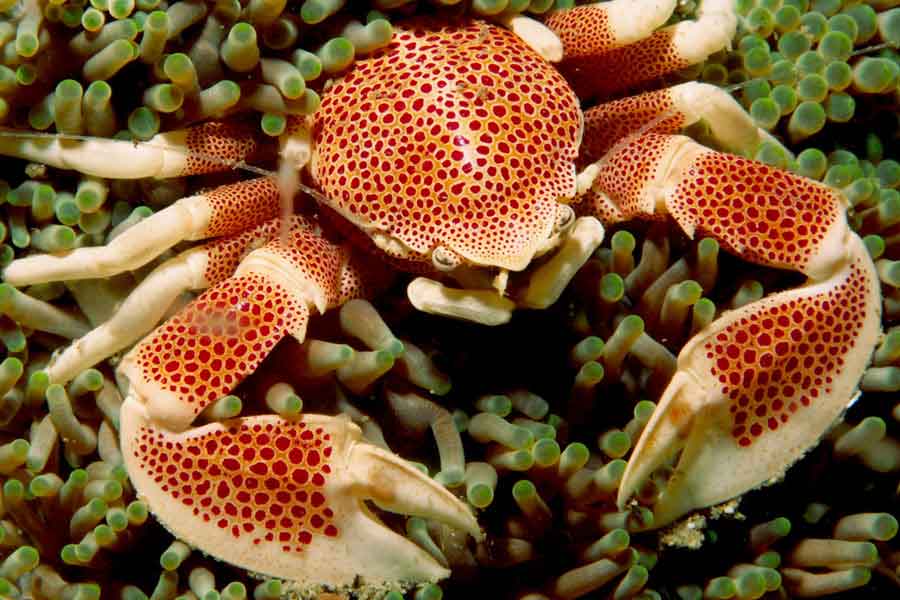
If we consider that a large part of the available food in the sea consists of plankton, it would be logical to assume that many animals have developed mechanisms to obtain it.
Whales use their baleen to filter seawater, some fish rely on their gills, and the stationary coral contentedly captures the microorganisms that stick to its polyps.
Other animals watch the plankton pass by their bodies without being able to capture these microscopic beings. This is the case for crabs, or at least most of them. The porcelain crab has modified some of its mouthparts, transforming them into fine sieves that it spreads out against the current like fans. The delicate filaments trap the plankton carried by the current and then transport it to the mouth, where it is ingested.
Microscopic plankton is certainly not abundant in terms of digestible organic volume, but it is also not very laborious to obtain. Little energy is gained from consuming it, but little energy is spent in acquiring it, making it still a «good deal.»
It is noteworthy that these beautiful animals, like other crabs, possess the characteristic claws that are essential for defense but also serve as specialized tools for obtaining food from the bottom. The porcelain crab can capture small organisms or take charge of a piece of carrion with the assistance of these claws.
This provides this particular animal with at least two sources of food, making its survival more secure. When an animal has only one food source, its life is in danger. Whatever affects the resource will undoubtedly affect the animal: if the source were to run out, the predator would disappear with it. However, if it had a second food source, it could turn to it when the first one is depleted.
Having alternatives remains a fundamental phase in the survival of species. After all, the sea is never easy. Each sunrise witnesses a battle where every animal tries to feed on another while avoiding becoming food themselves. It’s not so terrible; it’s the game of life. Some die so that others may live, seeking what we often call «balance.»
«You cannot defend what you do not love, and you cannot love what you do not know.»

